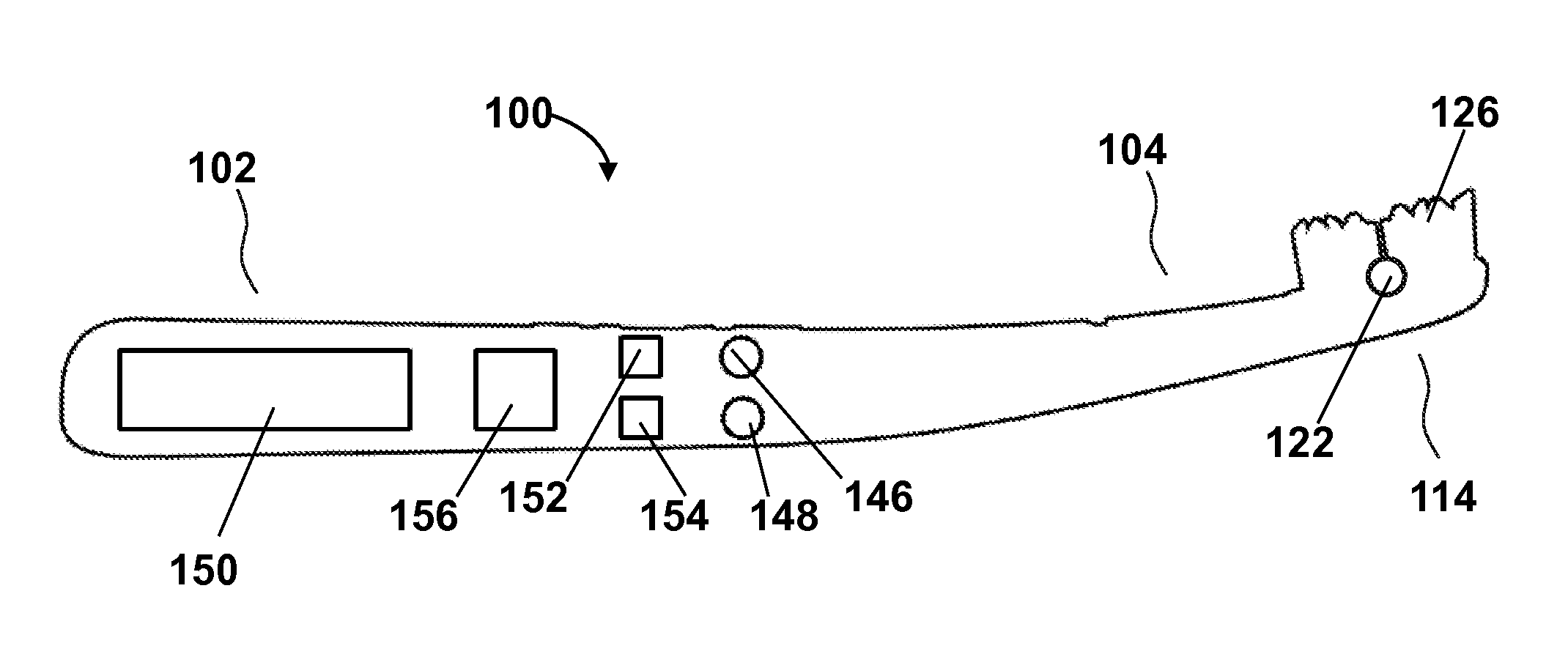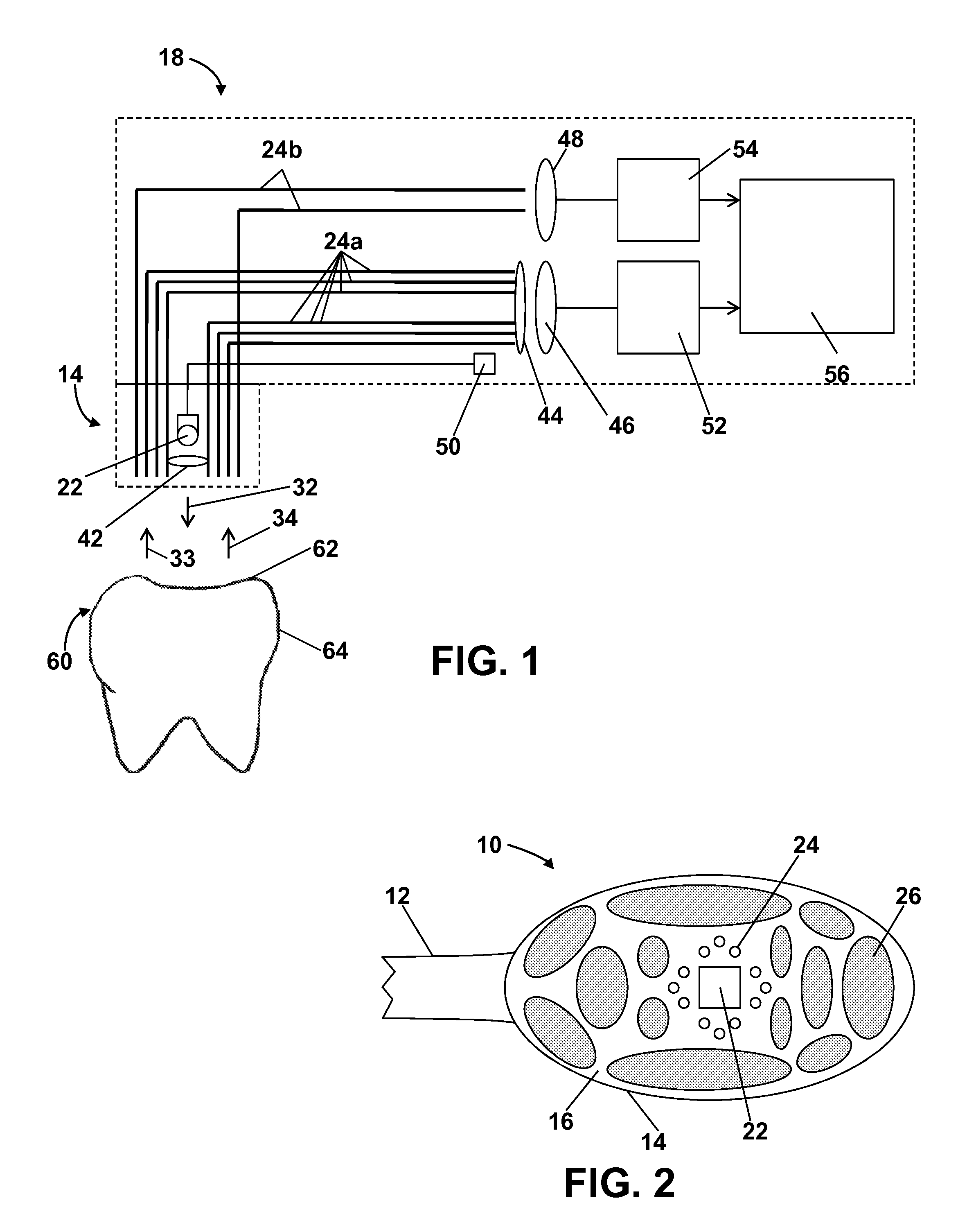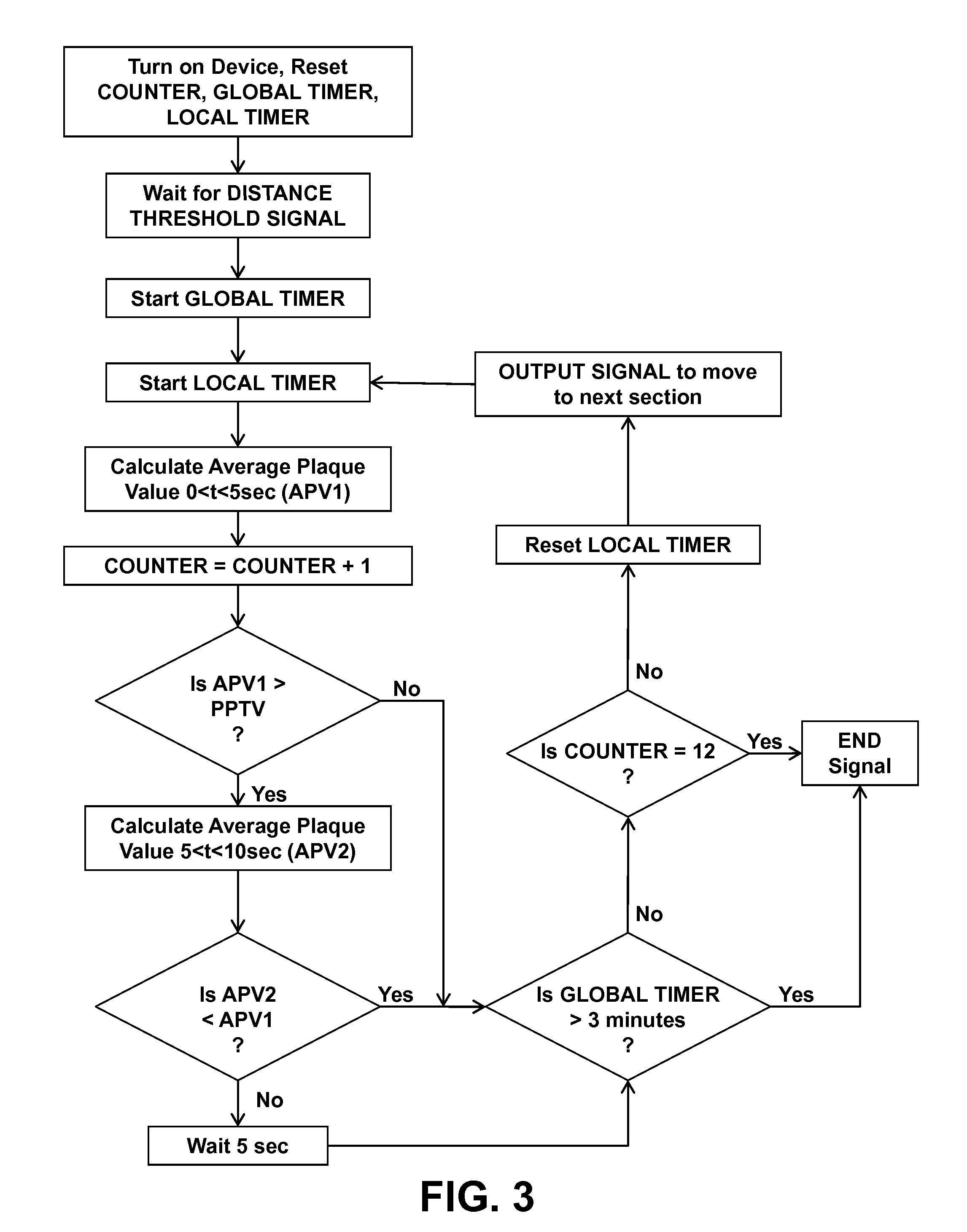Device and method for cleaning the oral cavity
- Summary
- Abstract
- Description
- Claims
- Application Information
AI Technical Summary
Benefits of technology
Problems solved by technology
Method used
Image
Examples
example 1
Determination of the Compensated Plaque Value
[0069]A plaque detecting toothbrush was created by modifying the head of a manual toothbrush by inserting a blue light-emitting diode (LED) facing outwards from the head, allowing the light from the LED to illuminate the tooth surface. The LED was surrounded by an array of 12 fiber optic filaments, also pointed towards the tooth surface in the area illuminated by the blue LED. The fiber optics passed through the neck of the toothbrush to a pair of photo sensors (Taos TSL12S-LF) contained in the handle section of the toothbrush. The fibers were separated into two groups. One group passed through an optical filter (Semrock FF01-500 / LP) that allowed only wavelengths above 515 nm to pass, while the second group allowed all wavelengths to pass, i.e. no optical filter was utilized. The filtered light represented the plaque value while the unfiltered light was used to interpret the distance between the optical collector, i.e. the tips of the opt...
example 2
Use of the Oral Cleaning Device
[0082]The device described in Example 1 was used in a study to clean human teeth. Participants in the study did not perform any oral hygiene for 18-24 hours before the study was performed. The study was conducted using surrogate brushing by a hygienist using the American Dental Association-approved Bass Method. The mouth was divided into 12 equal sections so that each section could be analyzed individually. The maximum total time period for brushing of each section was predetermined and set to 10 seconds to simulate an entire mouth brushing time of two minutes. During brushing, the data produced with the device was output via serial communication to a PC that recorded the data.
[0083]FIG. 6 is a sample plot of the data produced from the device during the 10 second brushing of a particular section of the mouth. The data oscillates up and down because the detecting portion of the brush is repeatedly traveling over areas within the section containing diffe...
PUM
 Login to View More
Login to View More Abstract
Description
Claims
Application Information
 Login to View More
Login to View More - R&D
- Intellectual Property
- Life Sciences
- Materials
- Tech Scout
- Unparalleled Data Quality
- Higher Quality Content
- 60% Fewer Hallucinations
Browse by: Latest US Patents, China's latest patents, Technical Efficacy Thesaurus, Application Domain, Technology Topic, Popular Technical Reports.
© 2025 PatSnap. All rights reserved.Legal|Privacy policy|Modern Slavery Act Transparency Statement|Sitemap|About US| Contact US: help@patsnap.com



